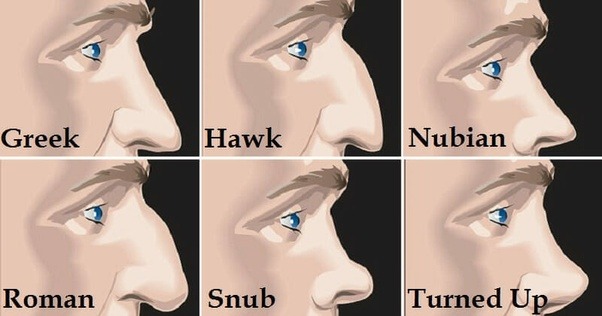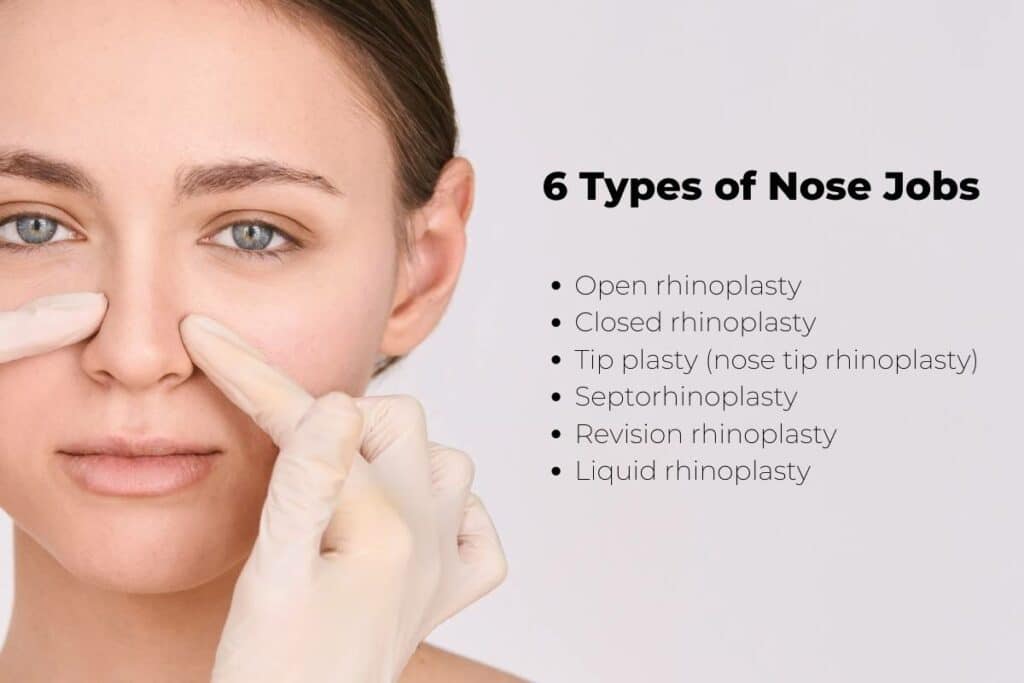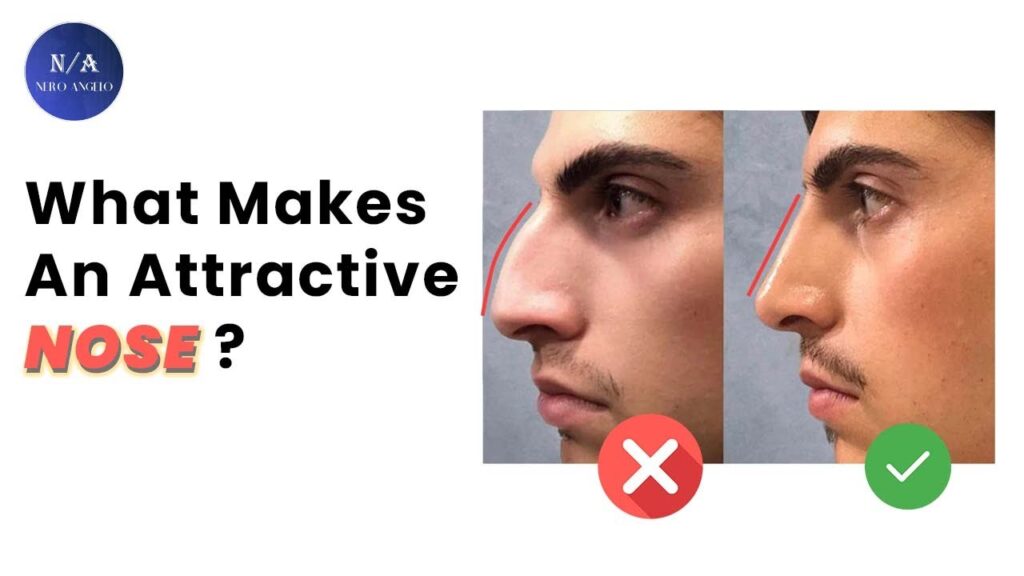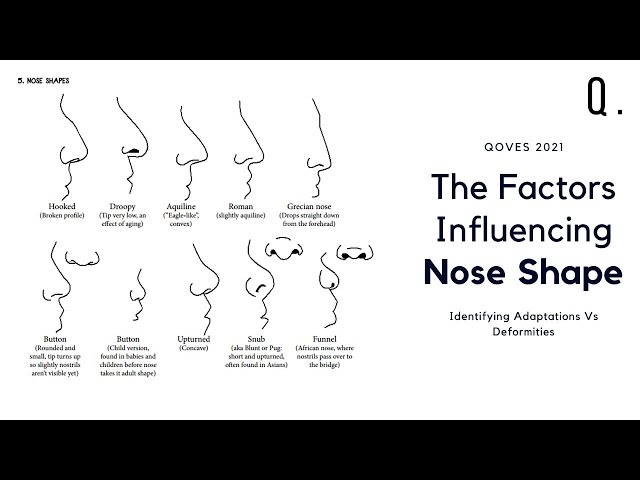The nose, often considered the centerpiece of the face, plays a pivotal role in defining facial aesthetics. The nose significantly influences one’s overall appearance, from its size and shape to its proportions. Understanding the various nose types, their causes, and the possibility of alteration through surgery sheds light on the intricate relationship between nasal features and facial beauty.
Understanding Nose Types
Definition of Nose Types:
The nose comes in various shapes and sizes, each unique to individuals. These differences in nasal anatomy are categorized into distinct nose types, each characterized by specific features and proportions.
Classification of Nose Shapes:
Nose shapes can vary widely, ranging from straight and symmetrical to crooked or bulbous. Understanding these classifications is essential in assessing facial harmony and determining suitable cosmetic interventions.
The Role of the Nose in Facial Beauty
The nose serves as a focal point of the face, contributing significantly to one’s overall attractiveness. Its shape and proportions influence facial symmetry and balance, impacting perceptions of beauty across different cultures and societies.
Impact of Nose Shape on Facial Aesthetics:
The shape of the nose can either enhance or detract from facial harmony. A well-proportioned nose can complement other facial features, while asymmetry or disproportion can affect overall attractiveness.
Cultural and Societal Perceptions of the Ideal Nose:
Ideals of beauty regarding the nose vary across cultures and time periods. While some societies favor small, delicate noses, others may appreciate more prominent or distinctive nasal features.

Causes of Different Nose Shapes
Genetic Factors:
Genetics plays a significant role in determining nose types and size. Inherited traits from parents influence nasal anatomy, contributing to familial resemblances in nasal features.
Environmental Influences:
External factors such as trauma or injury can alter the types of the nose. Accidents or sports-related injuries may result in nasal deformities that require medical intervention.
Developmental Factors:
Nasal development during childhood and adolescence can influence the final shape of the nose. Habits like chronic mouth breathing or prolonged pacifier use may affect nasal growth and development.
The Quest for the Perfect Nose
The concept of the perfect nose is subjective and influenced by societal standards of beauty. While some individuals may desire a nose that aligns with conventional ideals, others embrace the uniqueness of their nasal features.
Societal Standards of Beauty:
Media portrayals and cultural norms often dictate beauty standards, including ideals of nasal aesthetics. However, perceptions of beauty are subjective and can vary widely among individuals.
Psychological Implications:
For some individuals, dissatisfaction with nasal appearance can impact self-esteem and confidence. Cosmetic interventions like rhinoplasty may offer psychological benefits by addressing perceived flaws and enhancing self-image.
Exploring Different Nose Shapes- What Type Of Nose You HAve
Here are some different nose types:
1. Straight Nose:
The straight nose is characterized by a smooth and even nasal bridge, with minimal curvature or deviation. This nose shape is often considered aesthetically pleasing, as it contributes to facial symmetry and balance. Individuals with straight noses may appreciate their harmonious facial profile, although some may seek subtle enhancements through rhinoplasty to refine the nasal tip or bridge.
2. Roman/Grecian Nose:
Named after its resemblance to classical Greek and Roman statues, the Roman or Grecian nose features a prominent bridge and a slightly hooked tip. This nose shape exudes strength and character, often associated with noble or distinguished facial profiles. Individuals with Roman noses may embrace their unique appearance, while others may consider rhinoplasty to soften the nasal contour or reduce the prominence of the bridge.
3. Button Nose:
The button nose is characterized by a small and rounded nasal tip, often with a short nasal bridge. This nose shape creates a cute and youthful appearance, reminiscent of a button. Individuals with button noses may appreciate their diminutive size and delicate features, although some may desire subtle enhancements through rhinoplasty to refine the nasal contour or elevate the tip slightly.

4. Hawk Nose:
Also known as an aquiline nose, a prominent bridge, and a downward-pointing tip distinguish the hawk nose. This nose shape conveys strength and authority, often associated with leadership qualities. Individuals with hawk noses may embrace their distinctive appearance, while others may seek rhinoplasty to reduce the prominence of the bridge or refine the nasal tip for a softer profile.
5. Snub Nose:
The snub nose is short with a slight upward tilt at the tip, giving it a cute and youthful appearance. This nose shape is often associated with innocence and playfulness, evoking a sense of charm. Individuals with snub noses may appreciate their perky appearance, although some may consider rhinoplasty to refine the nasal tip or correct any functional issues such as breathing difficulties.
6. Upturned Nose:
The upturned nose, also known as a celestial nose, features a tip that points slightly upward. This nose shape creates a youthful and cheerful appearance, often associated with a friendly and approachable demeanor. Individuals with upturned noses may appreciate the perkiness it adds to their facial expressions, although excessive upturning can sometimes lead to breathing difficulties.
7. Downturned Nose:
Contrary to the upturned nose, the downturned nose has a tip that angles downward, giving the impression of a more serious or reserved expression. While some may find the dignified appearance of a downturned nose appealing, others may seek surgical intervention to lift the tip slightly for a more balanced facial profile. Downturned noses can sometimes be associated with aging, as the nasal tip tends to droop over time.
8. Crooked Nose:
A crooked nose is characterized by asymmetry or deviation in its shape, often resulting from trauma, injury, or developmental factors. Crooked noses can vary in severity, with some deviations causing functional issues such as breathing difficulties. While minor asymmetries may be acceptable to some individuals, more pronounced deviations may prompt consideration of rhinoplasty to correct the alignment and restore facial balance.
9. Bulbous Nose:
The bulbous nose is characterized by a rounded, fleshy tip and wide nostrils, often creating a prominent nasal profile. Individuals with bulbous noses may feel self-conscious about the size and shape of their noses, particularly if it dominates their facial features. Rhinoplasty can address bulbous noses by refining the tip and reducing nasal width, resulting in a more balanced and proportionate appearance.
10. Long Nose:
Long noses have an elongated appearance, with a prominent bridge and extended tip. While some may appreciate the regal or distinguished look associated with long noses, others may feel that their nose dominates their facial features. Rhinoplasty techniques can address long noses by reducing the nasal length and refining the tip, achieving a more harmonious facial balance.
11. Short Nose:
Short noses have a reduced nasal length, often appearing small in proportion to other facial features. Individuals with short noses may feel that their facial profile lacks definition or balance. Rhinoplasty procedures can elongate the nasal bridge and extend the tip, creating a more proportionate and aesthetically pleasing nasal profile.
12. Wide Nose:
Wide noses have broad nasal bridges and nostrils, contributing to a strong and distinctive facial profile. While some may embrace the unique character of a wide nose, others may seek rhinoplasty to refine its appearance. Surgical techniques can narrow the nasal bridge and nostrils, achieving a more streamlined and balanced nasal contour.
Nose Shape Alteration
Non-surgical Methods:
Non-invasive techniques such as fillers or Botox can temporarily alter the appearance of the nose by adding volume or reshaping contours.
Surgical Options:
Rhinoplasty, or nose surgery, remains the most effective method for permanent nasal reshaping. Surgical techniques can address a wide range of aesthetic concerns, from dorsal humps to nasal asymmetry.

Nose Surgery Procedures
1. Rhinoplasty:
Rhinoplasty is a surgical procedure aimed at reshaping the nose to improve its appearance or function. It involves modifying the nasal bones, cartilage, and soft tissue to achieve desired results.
2. Septoplasty:
Septoplasty focuses on correcting deviated septums, which can obstruct nasal airflow and contribute to breathing difficulties.
3. Revision Rhinoplasty:
Revision rhinoplasty is performed to address unsatisfactory results from previous nose surgeries or to correct complications.
Considering Rhinoplasty
Eligibility Criteria:
Ideal candidates for rhinoplasty are in good overall health, have realistic expectations, and are bothered by aesthetic or functional issues with their noses.
Psychological Readiness:
Candidates should undergo a thorough psychological evaluation to ensure they have realistic expectations and understand the potential risks and benefits of surgery.
Preparing for Rhinoplasty
Consultation with a Surgeon:
Prior to surgery, patients undergo a comprehensive consultation with a board-certified plastic surgeon to discuss their goals, medical history, and surgical options.
Pre-operative Instructions:
Patients receive detailed instructions on pre-operative preparations, including dietary restrictions, medication adjustments, and cessation of smoking.
Rhinoplasty Surgery Process
Anesthesia Options:
Rhinoplasty can be performed under different types of anesthesia, including local anesthesia with sedation or general anesthesia. The choice of anesthesia depends on various factors such as the extent of the surgery, patient preference, and surgeon’s recommendation. Local anesthesia with sedation is often used for minor rhinoplasty procedures, where the patient remains awake but relaxed during the surgery. On the other hand, general anesthesia is preferred for more extensive rhinoplasty surgeries, as it allows the patient to be completely unconscious and pain-free throughout the procedure. The anesthesia plan is discussed and decided upon during the pre-operative consultation with the surgeon, taking into account the patient’s medical history and individual needs.
Surgical Techniques:
Rhinoplasty surgery encompasses various surgical techniques tailored to address individual aesthetic concerns and achieve desired outcomes. The chosen technique depends on factors such as the patient’s nasal anatomy, aesthetic goals, and surgeon’s expertise. Two primary approaches to rhinoplasty are open rhinoplasty and closed rhinoplasty.
Open Rhinoplasty:
In open rhinoplasty, the surgeon makes an incision across the columella, the narrow strip of tissue between the nostrils, in addition to internal incisions within the nostrils. This approach provides direct access to the nasal structures, allowing for more extensive modifications and precise adjustments. Open rhinoplasty is often preferred for complex cases requiring significant reshaping or reconstruction of the nasal framework. While the open approach may result in a small visible scar on the underside of the nose, it allows for superior visualization and manipulation of nasal tissues, facilitating more predictable surgical outcomes.
Closed Rhinoplasty:
In closed rhinoplasty, all incisions are made internally within the nostrils, without an external columellar incision. This approach offers the advantage of hidden scars and reduced post-operative swelling, as there are no external sutures. Closed rhinoplasty is typically used for less complex nasal reshaping procedures, where access to nasal structures is limited to internal manipulation. While closed rhinoplasty may result in slightly less surgical trauma and faster recovery times compared to open rhinoplasty, it may be less suitable for cases requiring extensive nasal refinement or structural alterations.
The choice between open and closed rhinoplasty is determined during the pre-operative consultation, based on the patient’s nasal anatomy, surgical goals, and the surgeon’s recommendation. Both techniques aim to achieve natural-looking results while preserving nasal function and enhancing facial harmony.
Recovery After Rhinoplasty
Post-operative Care:
After rhinoplasty surgery, patients are provided with detailed post-operative care instructions to optimize healing and minimize complications. This includes guidance on managing post-operative discomfort, swelling, and bruising. Patients are advised to keep their heads elevated and refrain from strenuous activities that may increase blood pressure or strain the surgical site. Additionally, nasal splints or packing may be placed inside the nostrils to support the nasal structures and minimize swelling.
Expected Outcomes and Timeline:
The recovery timeline after rhinoplasty varies for each individual, but patients can generally expect to experience initial swelling and bruising that gradually subsides over several weeks. While noticeable improvement in nasal appearance may be visible within the first few weeks, final results may take several months to fully manifest as residual swelling resolves. Patients are encouraged to follow up with their surgeon for scheduled post-operative appointments to monitor progress and address any concerns during the recovery period.

Good Candidate for Nose Surgery
Ideal Candidates
- Individuals with realistic expectations and a clear understanding of the procedure.
- Healthy individuals with no underlying medical conditions that could impair healing.
- Non-smokers who are committed to following post-operative care instructions.
Who Should Avoid Nose Surgery?
Unsuitable Candidates
- Patients with unrealistic expectations or body dysmorphia.
- Individuals with uncontrolled medical conditions or chronic health issues.
- Smokers or those unwilling to adhere to pre- and post-operative guidelines.
Ideal Nose Shapes
Female Ideal Nose Shape:
The ideal female nose is often petite and softly contoured, with a gentle slope and refined tip that complements feminine facial features.
Male Ideal Nose Shape:
Male ideal nose types and shapes vary, but often include stronger angles and more prominent features, conveying masculinity and strength.
Conclusion
The nose plays a crucial role in facial aesthetics, contributing to one’s overall attractiveness and self-image. Understanding the diversity of nose types, and shapes, the factors influencing their appearance, and the available surgical interventions empowers individuals to make informed decisions regarding their nasal aesthetics.
